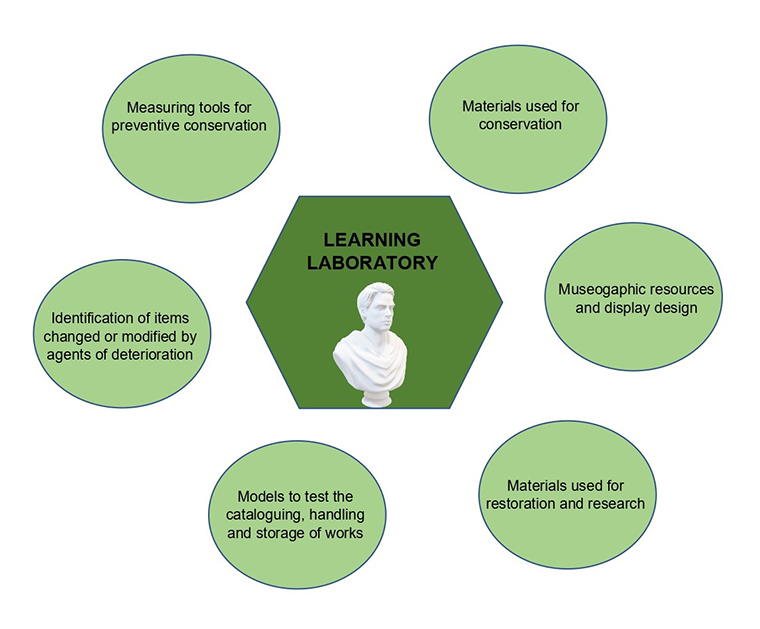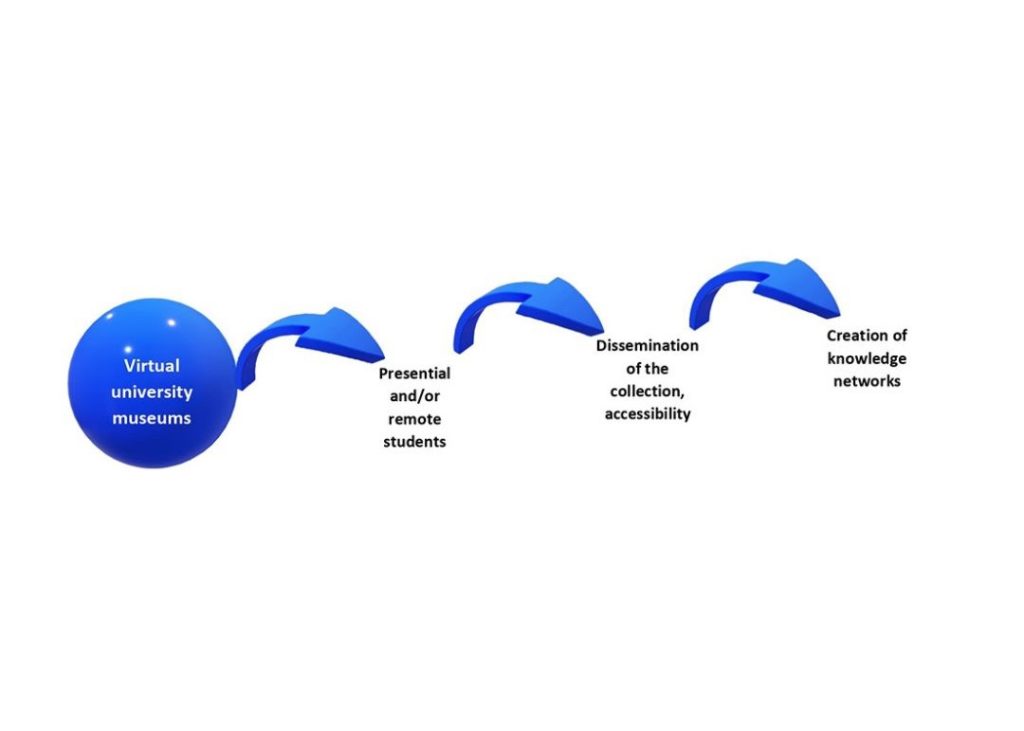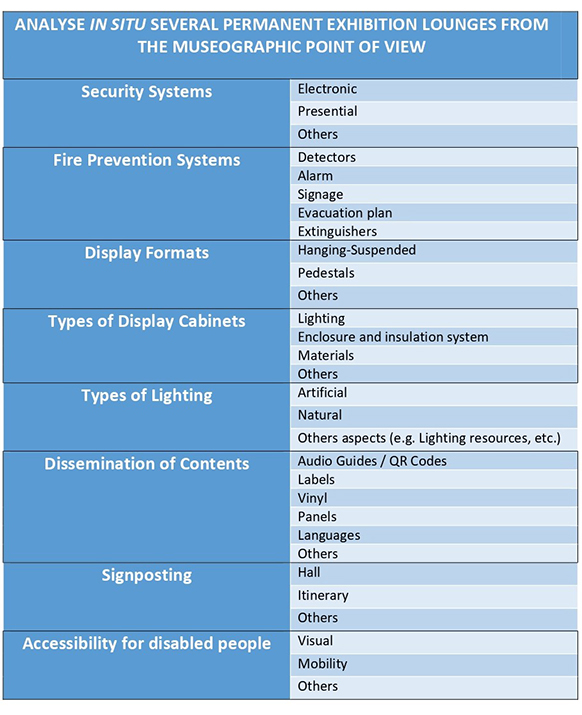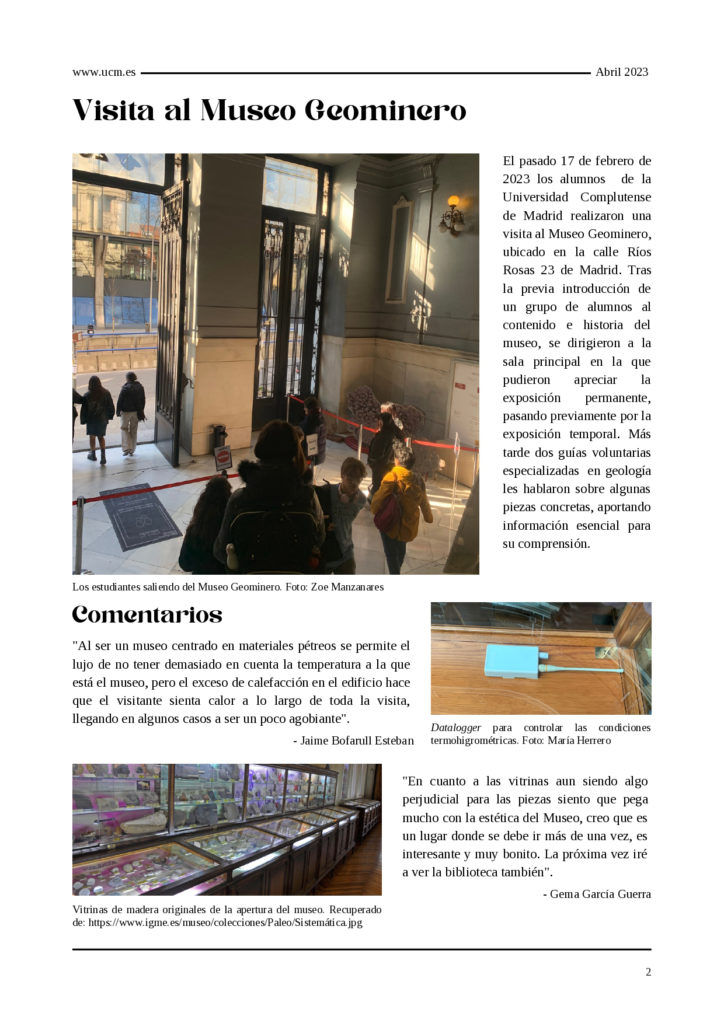
Inmaculada Real López
Assistant Lecturer, Department of History of Art of the Complutense University of Madrid, Spain.
Museums have no borders,
they have a network
July 17, 2023
Key words: museology, university, learning, competency development, digital humanities.
The motivation to find a teaching methodology that is more in keeping with practical usage — where the skills and tools of museology are put into practice — leads us to seek out which of the learning spaces are the most favourable within this area of study for university alumni.
The history of museums is associated with the task of collecting and since time immemorial it has been carried out as an inherent part of human endeavour, giving rise to a social practice that has remained immovable in time and which continues to this very day. Yet museology has evolved in response to other disciplines, like restoration and conservation, that have been annexed and have been contributing to the duties assigned to universities as cultural institutions. The multidisciplinary approach that the museological landscape currently encompasses at the international level, requires students to complement their studies in spaces that have been suitably and intentionally adapted to enable them to practise the aptitudes acquired during the training process.
Thus, we argue for the need to create ‘Learning Laboratories’. Just as these are fundamental in scientific areas of study, they should also be required for the professional training of museologists, a situation that would favour the development of competences and facilitate direct contact with the different elements and instruments pertaining to the discipline. This way, places like this could become spaces to explore and test, for students to familiarise themselves with the materials involved in museology, and to use the tools for cataloguing or the measuring instruments for conservation, i.e., to approach more closely all the duties and lines of work that museology involves.

Fig. 1. The proposed constituent parts for a Learning Laboratory.
The university museum is a space that has been traditionally aimed at student learning. It should be remembered that the main purpose of the establishment of these museums has been to promote research and learning. They are institutions where knowledge prevails. The collections held by this type of museum have permitted the study of collections in situ and have become a legacy traditionally limited to the alumni of a university community, to which obtaining access is not always easy. It is because of this that, currently, as progress is gradually made on the road to virtualisation, information and communications technologies (ICTs) are contributing to the expansion of the university museums through different networks. On account of its greater social reach and by being more universal than ever, this approach reaches out to national and international students alike. Similarly, these networked museums — as occurs with the Sistema Museale di Ateneo of the University of Bologna — are becoming fundamental learning tools to be able to study these collections from the university lecture room, gradually turning these institutions into more open and accessible spaces.

Fig. 2. Expansion diagram for virtual university museums.
Visiting museums physically should be the golden standard for university students undergoing museological training, it would be the third of these three work stages, as it is the one in which they come into contact with the reality of museums. It is necessary to obtain the greatest benefit from this stage and to put all the training skills and aptitudes associated with museology and museography, worked on previously with the students in both the lecture room and the laboratory, into practice. One of the most recommended activities in this sense would be the in situ analysis of all the museographic components of a given institution, for which, as supporting material, a plan of the museum’s exhibition lounges and a table with the components to be identified should be provided.

Fig. 3. Exercise plan to be completed at a museum.
Finally, the last suggested exercise would take place after the visit, when the student carries out a review of their experience at the museum from a museological point of view. By motivating students to initiate themselves in critical museological analysis, we encourage their writing skills, their reasoning and the use of a specific lexicon. The results of this individual exercise are interesting if we focus on them collectively and create Museum Visit Journals —designed and processed by the students themselves, thus contributing to participatory learning — clearly recording, much like a field notebook, the photographs of the institutions visited, interspaced with a compendium of the students’ written reflexions. Once the different stages referred to have been completed and the different teaching methods in the university lecture room have been applied, this enables us to preserve a record of the students’ ongoing learning process.


Fig. 4. A Visit Journal. An exercise completed by the students of the Complutense University of Madrid’s “Museography and Museology” syllabus.
Conclusion
Through the teaching activities presented in this article, museology students can progress in competency development, and gain greater cognitive capacity through applied knowledge of a practical nature. However, it would be necessary to create spaces to work on theoretical contents: places that are initially conceived as Learning Laboratories, where the different elements composing this discipline can be put into practice.
References
Casali, Alípio; Pasqualucci, Luciana, “Museu e formação cultural: Inovação curricular na contemporaneidade”. E-curriculum, 18, 3, 2020. DOI: https://doi.org/10.23925/1809-3876.2020v18i3p1315-1335
Domènech Casa, Jordi, “Museus Virtuals com a recurs didàctic. Construint ponts digitals entre els museus i l’aula”. @TIC. Revista d’innovació educativa, 2013, 10. DOI: https://doi.org/10.7203/attic.10.2102
Chi Siamo – Sistema Museale d’Ateneo – SMA (unibo.it)
Projects and Resources – UNIVERSEUM European Academic Heritage Network (universeum-network.eu)
